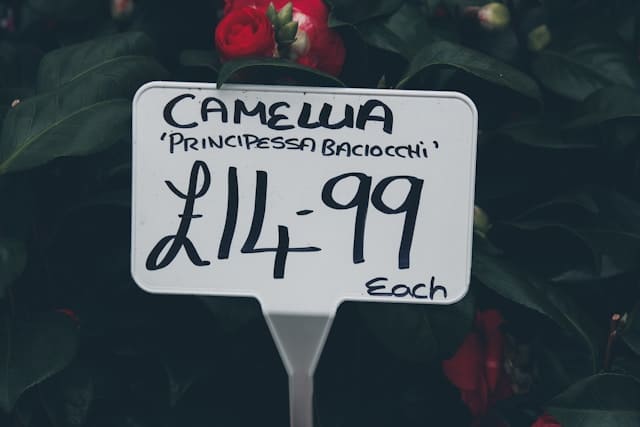Ever wonder why prices so often end in .99? From fast food menus to luxury fashion, the $9.99 price tag is everywhere. It’s not a coincidence—it’s a calculated psychological tactic known as the left-digit effect, and it’s one of the oldest tricks in the marketing playbook.
In this blog, we’ll explore how this pricing illusion works, why it’s so effective, and how you can become a more conscious consumer by seeing through the charm of .99.
🧠 What Is the Left-Digit Illusion?
The left-digit illusion (also called left-digit bias) refers to our tendency to focus on the leftmost digit of a price when evaluating its value. For example, we perceive $9.99 as significantly cheaper than $10.00—even though the difference is just one cent.
Why It Works:
- Cognitive bias: Our brains process numbers from left to right. The first digit we see heavily influences our perception.
- Emotional response: Prices ending in .99 feel like a deal, triggering a sense of savings and urgency.
- Mental rounding: We subconsciously round $9.99 down to $9, not up to $10.
As Simon-Kucher & Partners explains, this effect causes consumers to form a price judgment before their rational brain can catch up.
🧾 The History of Charm Pricing
The use of .99 pricing dates back to the late 19th century. Retailers began pricing items at $0.99 instead of $1.00 to force cashiers to open the register and give change—reducing theft. Over time, marketers realized that this tactic also increased sales.
Today, it’s known as charm pricing, a subset of psychological pricing strategies that includes:
- Odd pricing (e.g., $19.95)
- Prestige pricing (e.g., $199.00 for luxury appeal)
- Anchoring (e.g., showing a higher price first to make the current price seem like a deal)
📊 Real-World Impact of Left-Digit Pricing
Studies show that prices ending in .99 can increase sales by up to 24% compared to rounded prices. Here’s why:
|
Price Point |
Perceived Value |
Consumer Reaction |
|---|---|---|
|
$10.00 |
Full price |
Feels expensive |
|
$9.99 |
Discounted deal |
Feels affordable |
|
$9.95 |
Thoughtful price |
Feels strategic |
Even luxury brands like Apple and Nike use charm pricing to subtly influence perception—despite their premium positioning.
🧠 The Psychology Behind the Illusion
Let’s break down the cognitive mechanisms that make the left-digit illusion so powerful:
1. Left-to-Right Processing
We read numbers the same way we read text—left to right. The first digit we see (the “9” in $9.99) anchors our perception.
2. Perceived Bargain
Prices ending in .99 signal a deal, even when the discount is negligible. This taps into our desire to save money.
3. Emotional Framing
Odd prices feel less “whole” and more emotional. Rounded prices feel rational and final, while.99 feels flexible and negotiable.
4. Cognitive Fluency
We’re used to seeing .99, so it feels familiar and easy to process. This fluency increases trust and reduces friction.
🧠 How to Outsmart the Left-Digit Trap
Being aware of the illusion is the first step. Here’s how to shop with intention:
✅ 1. Round Up Mentally
Train yourself to round $9.99 up to $10.00. This small shift can help you make more rational decisions.
✅ 2. Compare Total Costs
Don’t just look at the price tag—factor in shipping, taxes, and return policies.
✅ 3. Use Price Trackers
Tools like CamelCamelCamel or Honey can show you historical prices and help you spot real deals.
✅ 4. Ask: “Would I Buy This at Full Price?”
If the answer is no, the .99 trick is probably working on you.
🧠 When .99 Backfires
While charm pricing works well for low- to mid-tier products, it can backfire in premium markets. Research shows that rounded prices (e.g., $100.00) are perceived as more trustworthy and high-quality in luxury categories.
|
Market Type |
Best Pricing Strategy |
|---|---|
|
Budget/Discount |
Charm pricing ($9.99) |
|
Premium/Luxury |
Rounded pricing ($100.00) |
|
Subscription |
Anchored pricing ($19.99/mo) |
🧭 Final Thoughts: Awareness Is Power
The left-digit illusion is a subtle but powerful force in consumer psychology. It’s not about avoiding .99 prices altogether—it’s about recognizing when your brain is being nudged and choosing to respond with intention.
Next time you see a $9.99 price tag, pause and ask: Is this a deal—or just a digit trick?








Leave a Comment